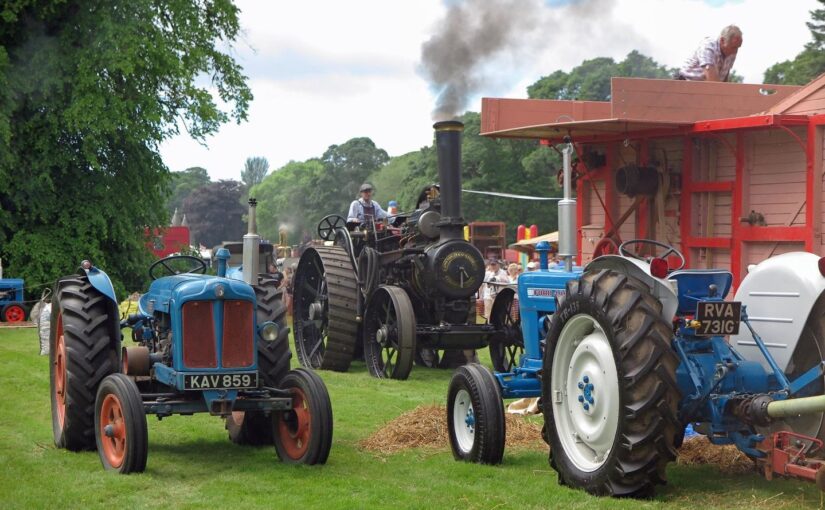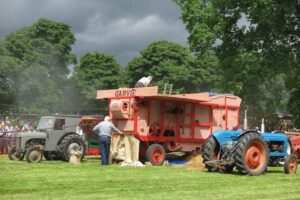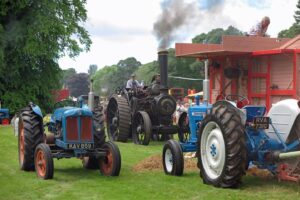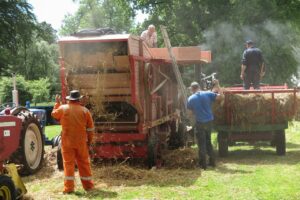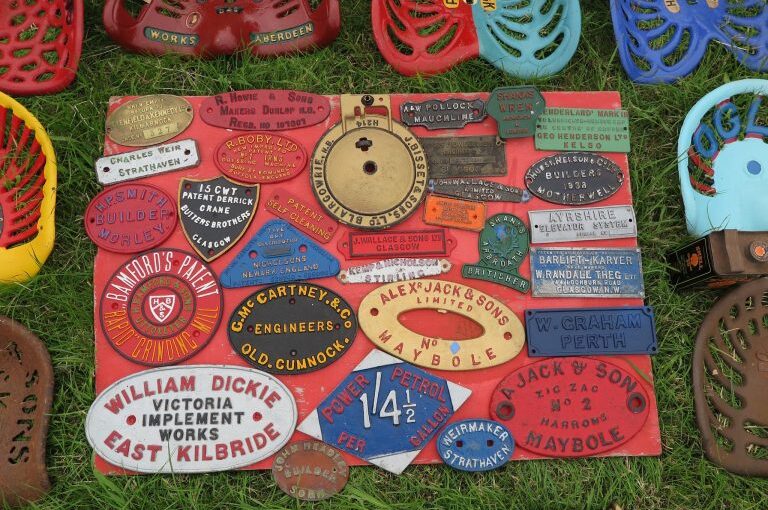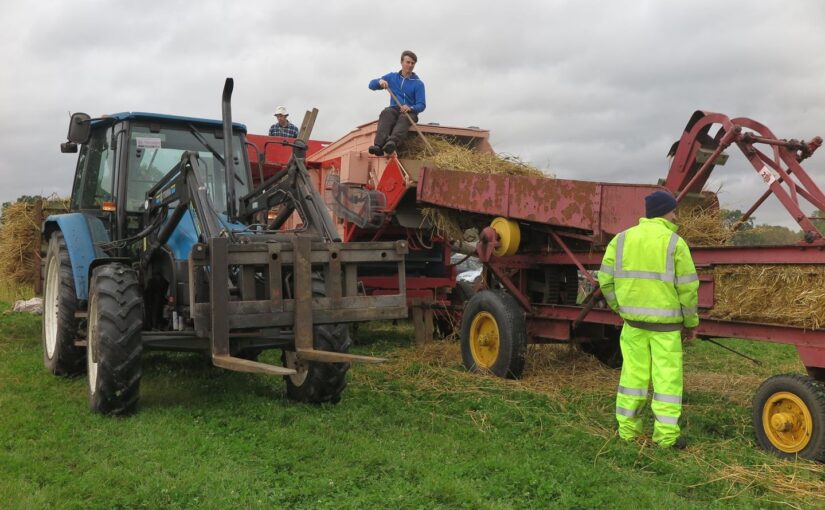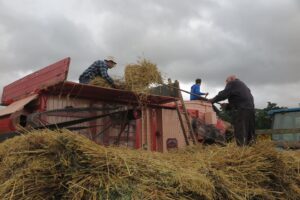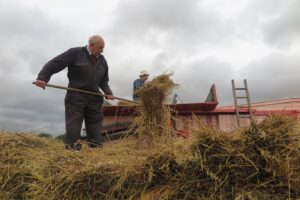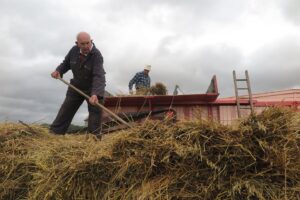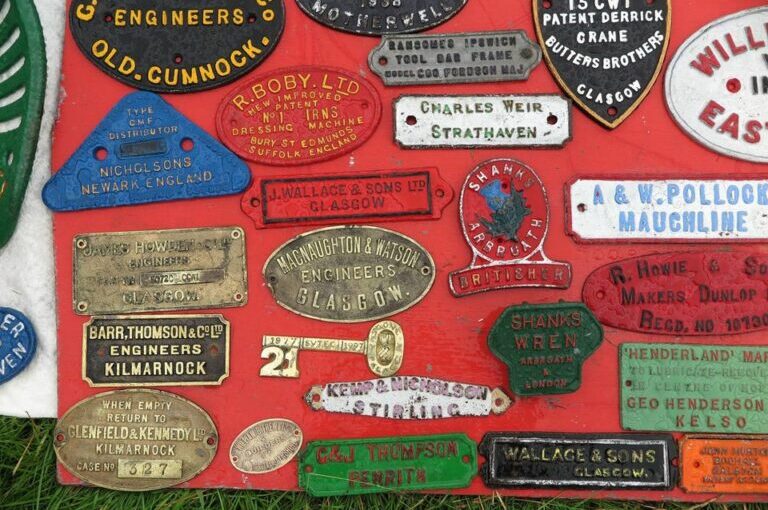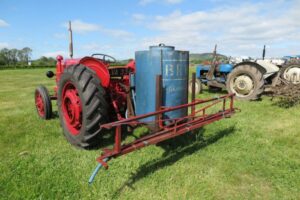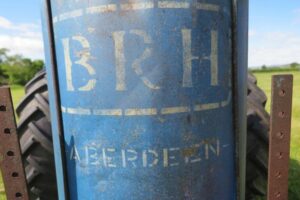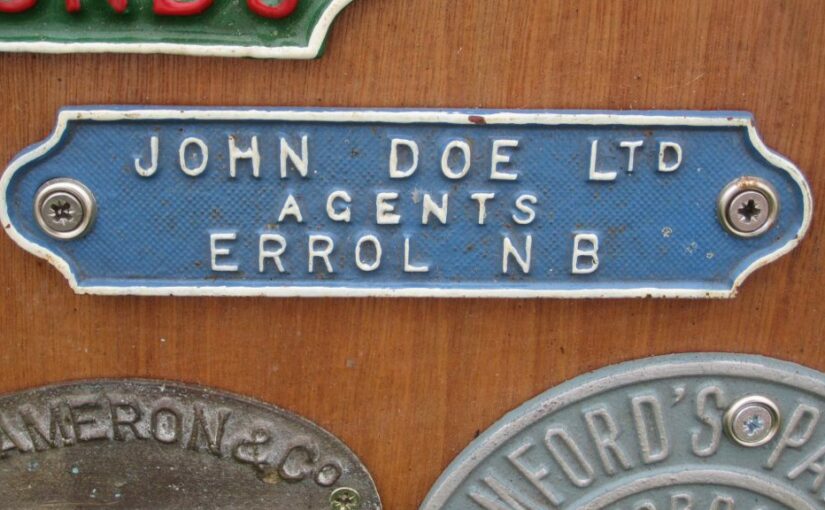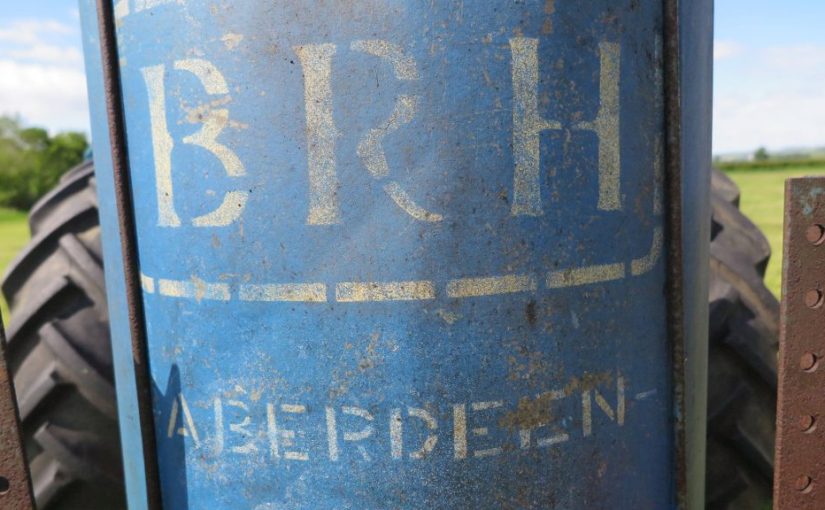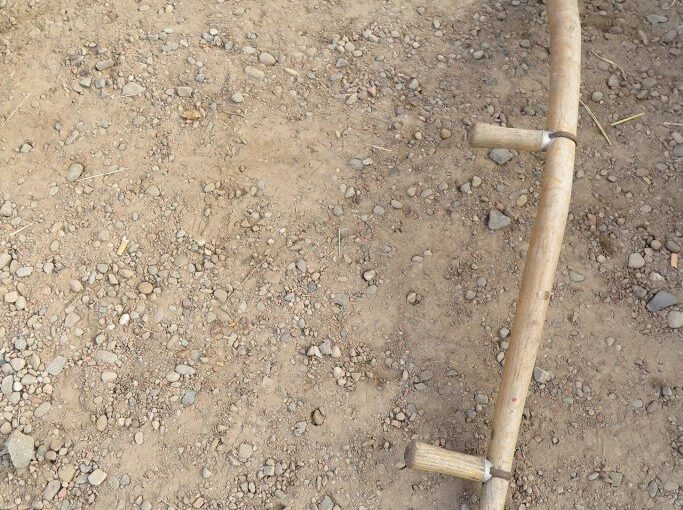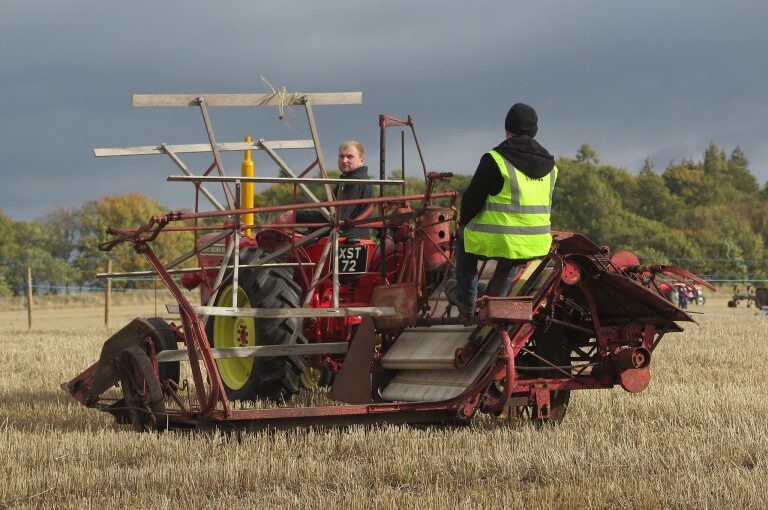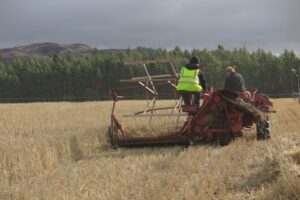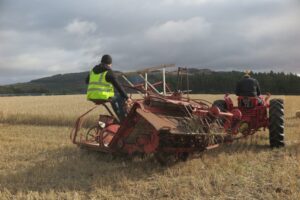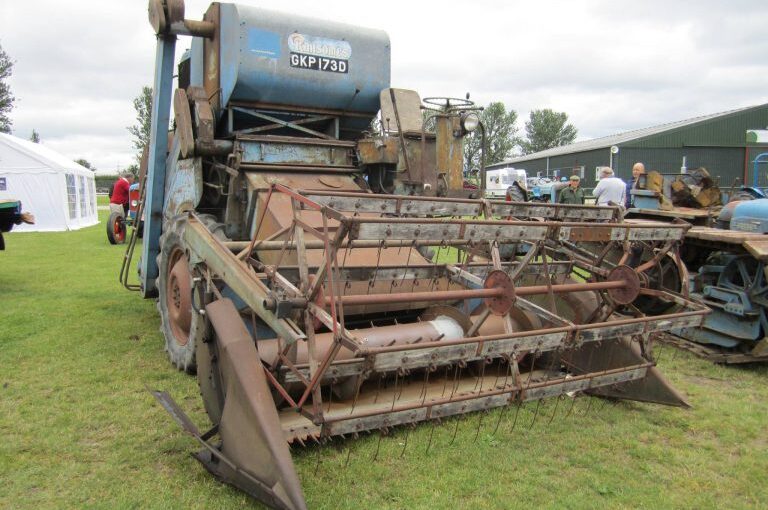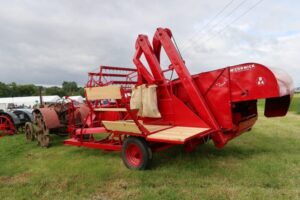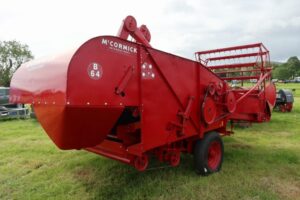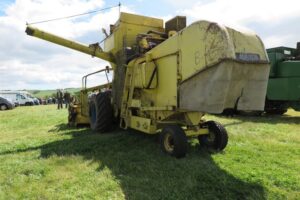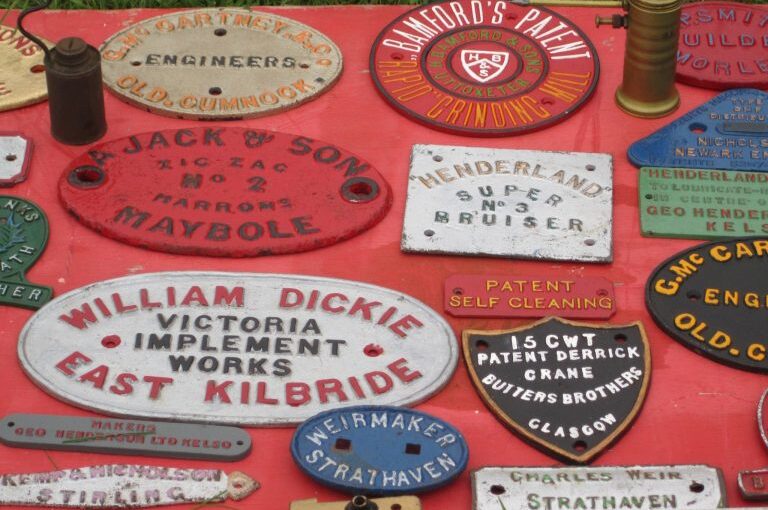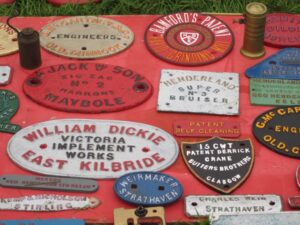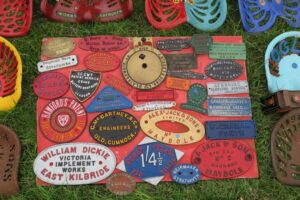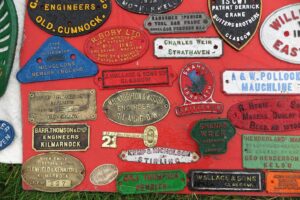Local and county agricultural shows used to – and some still do – play an important role for the exhibition of agricultural implements and machines. These include the shows at Ayr, Glasgow and Perth. They were forums for the exhibition of what was new and desirable for the farm that could be purchased locally.
Some newspapers provided lengthy and detailed accounts of the implements and machines exhibited at these shows. They include the Dundee Courier. It provided such an account of the Perth Show in 1939 shortly before the outbreak of the Second World War. It provides an account of what framers in the county (and surrounding areas) were purchasing or looking to have as new implements and machines. It also shows what was new (and could be desirable) as well as who was exhibiting and what they were exhibiting.
The following article appeared in the pages of the Dundee Courier on 4 August 1939:
“Attractions for Perthshire show
Over 2000 entries-the day’s programme
“Perth Show Day” is one of the big days of the Perthshire calendar. It brings together both rural and urban interests in an annual rendezvous, and the secretaries, J. W. Wyllie and Henderson, solicitors, Perth, have again done everything possible to ensure a brilliant success.
Electricity generation
Messrs James Scott & Co., whose electric installations are well known all over Scotland, will be showing in operation two of the latest Petter electric generating sets, specially suitable for use on farms and country houses.
One is of the automatic petrol-driven type, the starting and stopping of which is controlled by switching on or off the lights. The other is of the Diesel oil type and very suitable for heavy farm work.
Experts in each different branch of electrical engineering will be in attendance to assist and advise on any problems concerning electric work, and a very complete range of domestic and farm electric equipment will be on view, including refrigerators and coolers, washing machines, cookers, radio sets, and small electric appliances.
A visit to this stand will be well repaid if only to see the latest developments and uses to which electricity may be put.
For fruit cultivation
One of the most outstanding exhibits in the machinery line is that arranged by Messrs John Harper & Sons, Blairgowrie.
A special attraction here is the Ransomes caterpillar tractor for the cultivation of fruit. It is to complete with power take-off, pulley, cultivator, and plough.
This firm specialises in tractors, and amongst a number on view is a Fordson with power take-off, driving a Massey-Harris 7-foot cut binder fitted with a new torpedo outside divider. This tractor will also drive a threshing machine, 4 foot wide full dressing type, manufactured by Garvie & Sons.
They are also showing a utility Fordson tractor fitted with Dunlop pneumatic tyres front and rear and which is to be in motion driving a Bisset binder, 6-foot cut, of the latest pattern.
In addition there is a row crop tractor which is specially suited for drill work and which is complete with Ransomes cultivator and ridger, and with special power lift.
Also on view is a tractor trailer fitted with special lift and specially made for easy operation.
There is a very wide line of small implements, including a corn crusher and power driven self-propelled turnip cutter, a sack-lifting machine, and iron pig troughs.
“Rural Gas”
The Rural Gas exhibit of W. S. Ferguson & Co., Ltd, Chemical Works, Perth, will make a strong appeal to those residing in areas where gas is not available. Rural Gas-the improved form of bottled gas-offers to rural districts all the conveniences that gas has brought to the towns. The latest appliances for heating, lighting, and cooking will be on view. At this stand, too, an interesting novelty touch will be provided by a wireless set worked off Rural Gas.
Caterpillar tractors
L. O. tractors Ltd, Perth, sole distributors in Scotland for the Caterpillar and john Deere tractors, will have on view some 14 tractors and a varied assortment of implements.
These include a winch to the Caterpillar model D2 tractor, a power take-off to the Caterpillar model R2 tractor, and an integral plough and mower for the recently introduced John Deere model L tractor.
Caterpillar tractors are in use on most of the Government schemes throughout Scotland, and the John Deere tractors have proved themselves in test to be up to the same high standard.
New potato harvester
Messrs Frew & Company, Ltd, main Fordson distributors, Perth, are showing a range of the latest Fordson products at stand 17.
The highlight of the display is the new Hyllerberg potato harvester, introduced at the “Highland”, where it created so much interest.
Also on view is the Fordson row-crop tractor fitted with Ransome’s toolbar, land utility with Goodyear tyre equipment which drive binders. Fordson agricultural tractor with spade-lugs, coupled to Sellar’s plough and a Cockshutt plough.
A Ford V8 22 utility car, suitable for farm and estate work, and a Fordson Thames truck will also be displayed.
Mr Whittet, Frew & Company’s tractor representative, will be in charge, and will be pleased to furnish particulars and arrange demonstrations.
Fencing problem
Messrs Barclay, Ross & Hutchison, agricultural engineers, will extend a welcome to their friends throughout Central Scotland.
This year they present a comprehensive display of agricultural implements of the newest types, including tractors, engines, toolbars, binders, threshing machines, and a portable milking unit.
In addition an exhibit of special interest to estate owners and farmers, who are only too well acquainted with the problem of fencing, will be the Wolseley Parmak Electric fencer.
Binders from Blairgowrie
Binders will be outstanding in the display by Messrs J. Bisset & sons, Greenbank works, Blairgowrie. These include the latest pattern drive binders, tractor hitch binders, and horse binders. In addition there will be shown tractor potato diggers, latest 3L hay mower, and farm cart complete with rubber tyres.
M.M. tractors
Living up to their now well-known motto, “Everything for the farm”, James H, Steele, Harrison Road, Edinburgh, the prominent agricultural implements and machinery firm, have staged an exhibition of first-rate interest. Special stress is being placed on the “M.M.” tractors, no doubt in view of the agricultural expansion plan.
The ”M.M.” tractors offer a varied line for all types of farm work, including one of the latest, namely the Universal “R” tractor, which is fitted with an enclosed cab, allowing the driver to farm the land in all kinds of weather. There is a maximum amount of visibility so that the operator can carefully watch this work. This tractor can be bought with or without the comfort cab. If bought without the cab it can be installed later at low cost.
It is fitted throughout with the pneumatic tyres. “M.M.” attachments are of the newest design to give outstanding performance and easier operation. Visitors to this stand will receive full particulars regarding this efficient robot.
Carts on view
The stand of J. D. Allan & Sons, Culthill Implement Works, Murthly, will make a strong appeal to all progressive farmers.
A selection of the latest types of carts fitted with Dunlop tyres will be on view, including a coup cart for general purposes, and cart for hay or harvest, tipping type with wings and removeable sides.
Of special interest will be the latest type of tractor for general purposes work, carrying up to three tons.
The display also includes the “Kleensweek” hay collector, and hay sweep for use with tractor, and byre and stable barrows fitted with pneumatic tyres.
Latest in implements
John Doe Ltd, Errol, are showing a large selection of farm implements, with all the latest improvements to suit the smallest or largest of farms. The display includes Case and Fordson tractors, tractor ploughs and cultivators, horse and tractor binders, potato diggers, toolbar frames &c.
There will also be a power-driven potato sorter with a new pattern double roller conveyor.
The new electric fencer will no doubt attract considerable attention. Improvements on and attachments for implements and tractors are also to be seen.”
